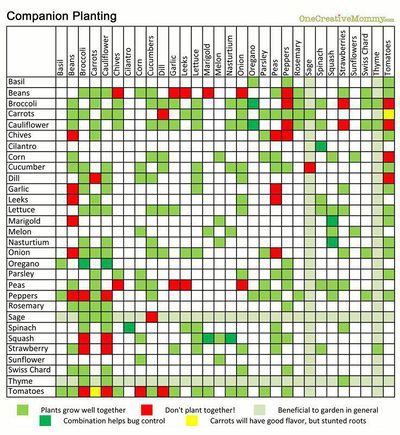Agriculture: Difference between revisions
| Line 66: | Line 66: | ||
=== Regeneration === | === Regeneration === | ||
{{#ev:youtube|QfTZ0rnowcc|300|right|DescriptionRegeneration of Our Lands: A Producer’s Perspective, Gabe Brown min 16:24}} | |||
Published on Mar 29, 2016 | Published on Mar 29, 2016 | ||
Revision as of 16:26, 3 July 2016
General
40 maps that explain food in America
CSA - Community Supported Agriculture
Inside a CSA program, part 1 RodaleNews
Permaculture
The Goal of Permaculture 5 Min
TEDx Talk: Homestead Resiliency, Food Systems Regeneration 24 min
25-Year Permaculture Project 28 min
Perennial Paradise-Zaytuna Farm 32 min
Geoff Lawton Urban Permaculture
The Case for Permaculture - 2 Hr
BioIntensive Farming and Gardening
For great soil quality and space saving in the garden, consider biointensive gardening. The biointensive method is another great way to produce healthy organic food in your farm and/or garden. The people at Ecology Action: GROW BIOINTENSIVE have come up with eight essential aspects that are the foundation of GROW BIOINTENSIVE:
✧ Double-Dug, Raised Beds ✧ Composting ✧ Intensive Planting ✧ Companion Planting ✧ Carbon Farming ✧ Calorie Farming ✧ The Use of Open-Pollinated Seeds ✧ A Whole-System Farming Method
The following 9 part video series entitled GROW BIOINTENSIVE: A Beginner's Guide from John Jeavons and Cynthia Raiser Jeavons is available by clicking here
Click the following link to learn more about the HISTORY OF ECOLOGY ACTION
The following link will Teach Yourself the Basics. On this page you will find three tabs that will give a an introduction, a self-teaching handbook, as well as how-to videos. You can also watch them from YouTube.
The The Unconventional Farmer website details how to use every-day items like milk, sugar, common plants and natural habitat to create fertilizers, inoculants, etc. to grow plants larger and healthier, keep pigs and fish at much greater densities without disease, reduce odor, enhance flavor of vegetables/fruits and more.
Keyline Principals or Concepts
Keyline design is a technique for maximizing beneficial use of water resources of a piece of land. The Keyline refers to a specific topographic feature linked to water flow. Beyond that however, Keyline can be seen as a collection of design principles, techniques and systems for development of rural and urban landscapes. Keyline design was developed in Australia by farmer and engineer P. A. Yeomans, and described and explained in his books The Keyline Plan, The Challenge of Landscape, Water For Every Farm and The City Forest.
The following is from Wikipedia
Percival Alfred Yeomans (1905 – 1984) was an Australian inventor known for the Keyline system for the development of land and increasing the fertility of that land. As a mining engineer and gold assayer, Yeomans had developed a keen sense of hydrology and equipment design. Upon his brother-in-law’s death in a grass fire, PA Yeomans assumed management of a large tract of land he later named Nevallan in New South Wales. Here he developed improved methods and equipment for cultivation. His designs won him The Prince Philip Design Award in 1974.
His Keyline principles or concepts (Keyline Design) have been adopted by farm owners in almost every country in the world. Yeomans’ Keyline concepts are now part of the curriculum of many sustainable agriculture courses in colleges and universities across the world. His ideas have also been a key factor in the development of permaculture design. P.A. Yeomans wrote four books; The Keyline Plan, The Challenge of Landscape, Water For Every Farm and The City Forest.
Farming
The Industrial Egg vs The Permaculture Egg
Working Farm - with good information from start up to profit [1]
Regeneration
Published on Mar 29, 2016
The United States is in crisis. The health of our soil resource has declined to such a point that it is not only negatively affecting farm and ranch profitability, but it is also having a devastating impact on everything from our water quality to our communities and even to our health. North Dakota rancher Gabe Brown walks us through a common sense solution to this crisis.
Gabe Brown is one of the pioneers of the current soil health movement that focuses on regenerating our resources. Gabe, along with his wife, Shelly, and son, Paul, own and operate a diversified 5,000-acre farm and ranch near Bismarck, ND. Their operation focuses on farming and ranching in nature’s image.
The Browns holistically integrate their grazing and no-till cropping systems, which include a wide variety of cash crops, multi-species cover crops along with all natural grass finished beef and lamb. They also raise pastured laying hens, broilers and swine. This diversity and integration has regenerated the natural resources on the ranch without the use of synthetic fertilizers, pesticides and fungicides.
The Browns are part owners of a state inspected abattoir which allows them to direct market their products. They believe that healthy soil leads to clean air, clean water, healthy plants, animals, and people.
This talk was given at a TEDx event using the TED conference format but independently organized by a local community. Learn more at http://ted.com/tedx
Animal Husbandry
Meat Preservation
Meat Preservation without refrigeration
Gardens
Back To Eden Official trailer Full film
Symbiotic relationships of plants and microbes [2]
Seed Swaps
The Living Network - Seeds of Life

Agriculture |
Permaculture |
Garden |
Seeds |
Seeds of Life |
Seed shares |
Tilling of the Earth |
Allan Savory | Hugelkultur |
Milk |
GMO |
Food production |
Food Rising |
Food for thought |
Food Stamps |
Food Toxins |
Ingredients |
Health Share |
Fermentation |
Healthy Gut |
Rave Diet |
Politics of Health